As we explored the different islands of Midway Atoll, I was amazed at the amount of military artifacts that we came across. To tread on the same ground that the famous battle of Midway occurred on would often cause me to pause and reflect on the atrocities that turned such a beautiful paradise into a living hell for the soldiers who were stationed here.
Yet, just as time eventually healed the fractured relationship between Japan and America, time eventually restored these war-torn islands to a nearly pristine state.
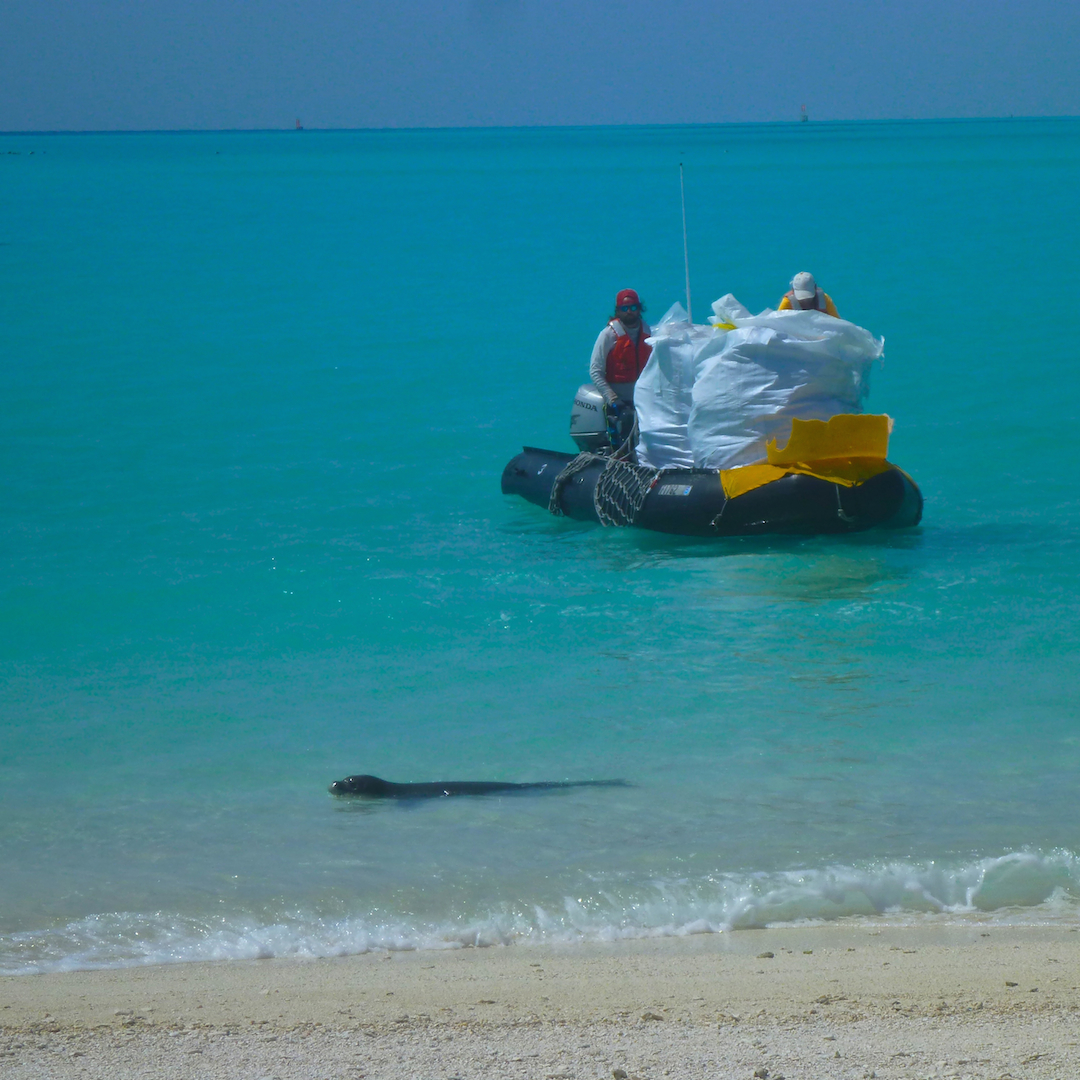
Now days the only battle occurring in Midway is against marine debris, which is quite hazardous to the local wildlife. Above is one of our two zodiacs filled with garbage that we collected off of a small stretch of beach on Eastern Island, at Midway.
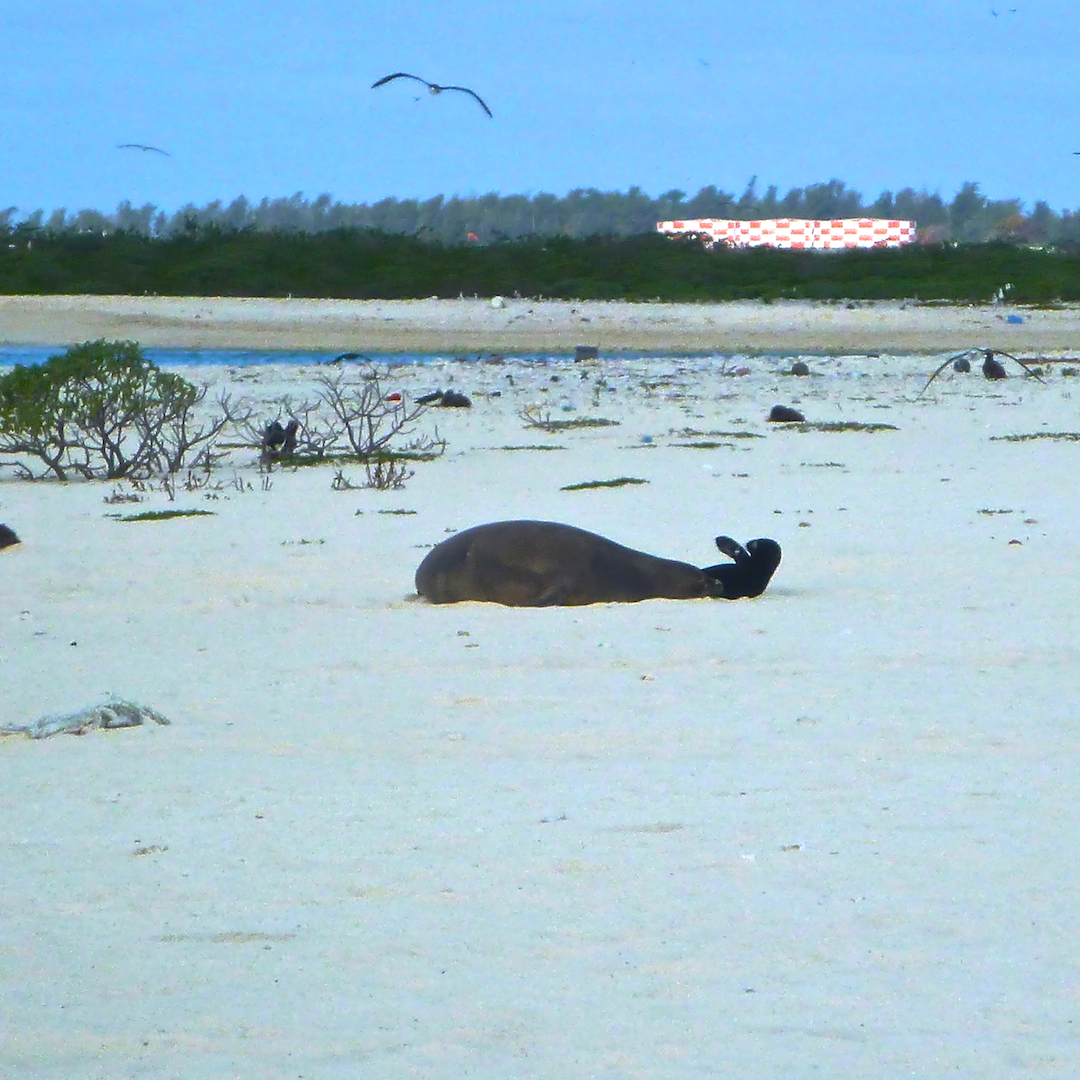
A momma monk seal rests as her pup points towards all the debris down the beach that we still needed to clean up, on this particular side of the island. Notice the three checkered water tanks in the distance. Midway’s Sand Island uses rain catchment to fulfill all of its freshwater needs.
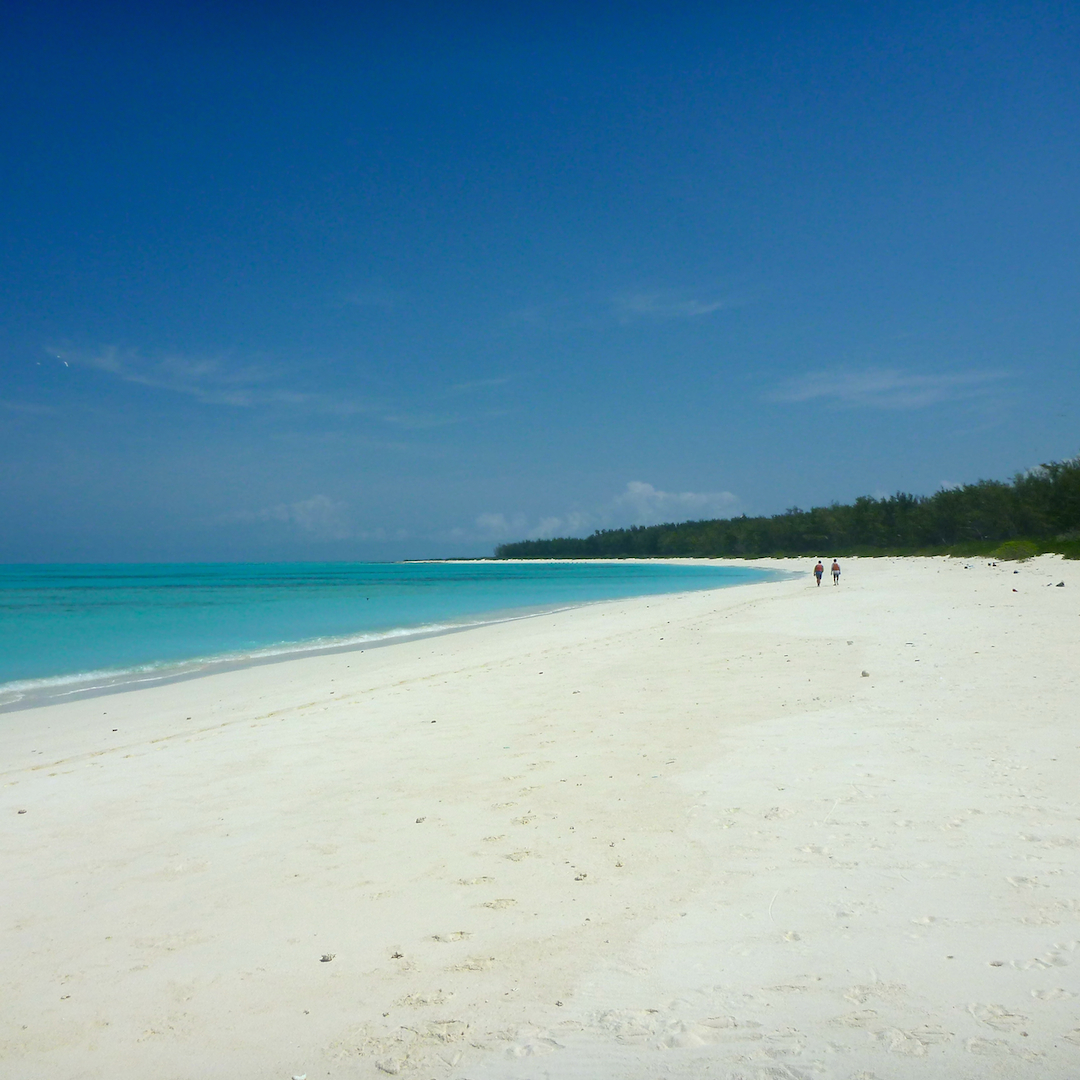
As we would survey the beaches for debris and entangled animals, it was so hard to believe that such a peaceful place could ever have hosted one the most decisive battles in the biggest war in human history.
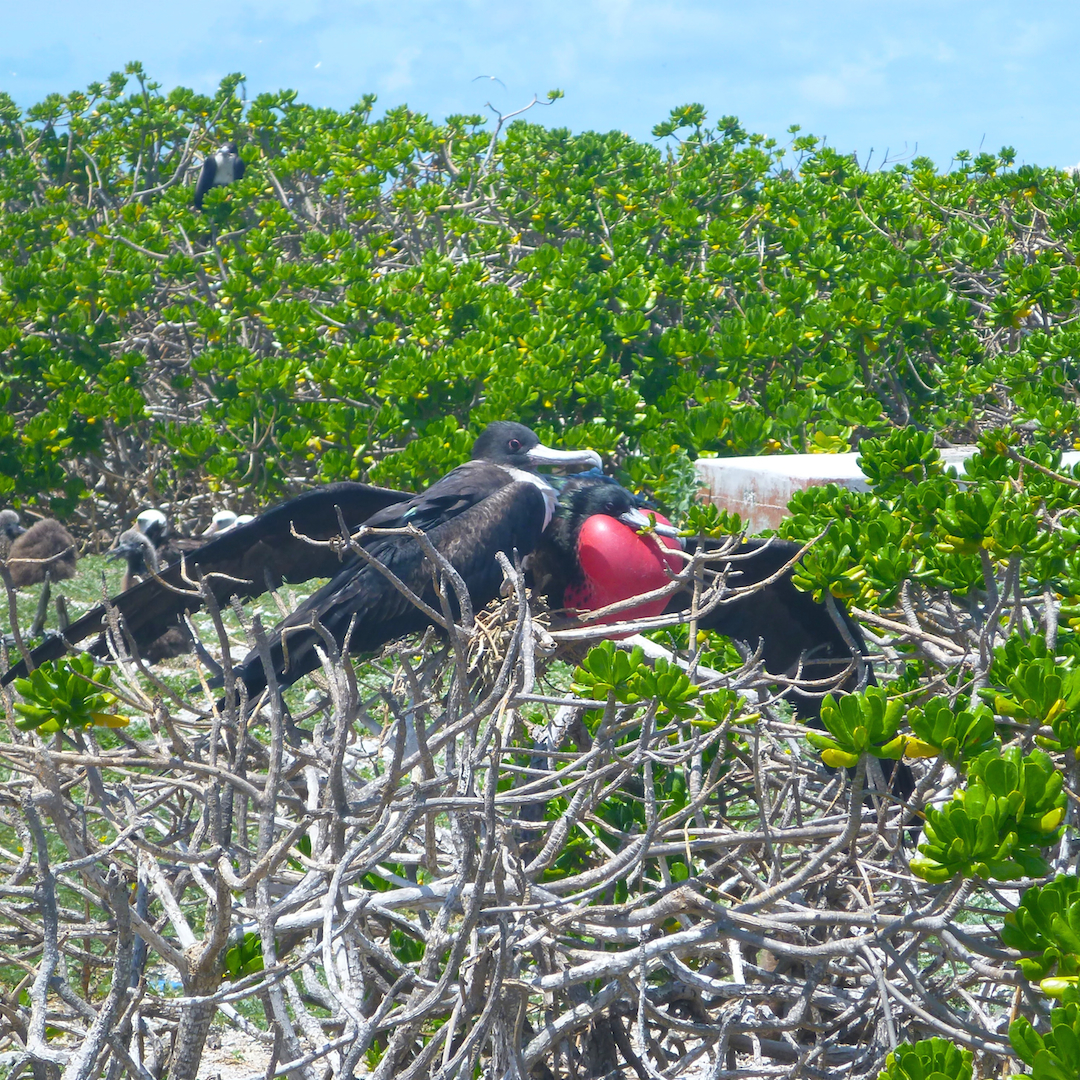
Given enough time and if left alone, it would appear that nature eventually restores balance and harmony.
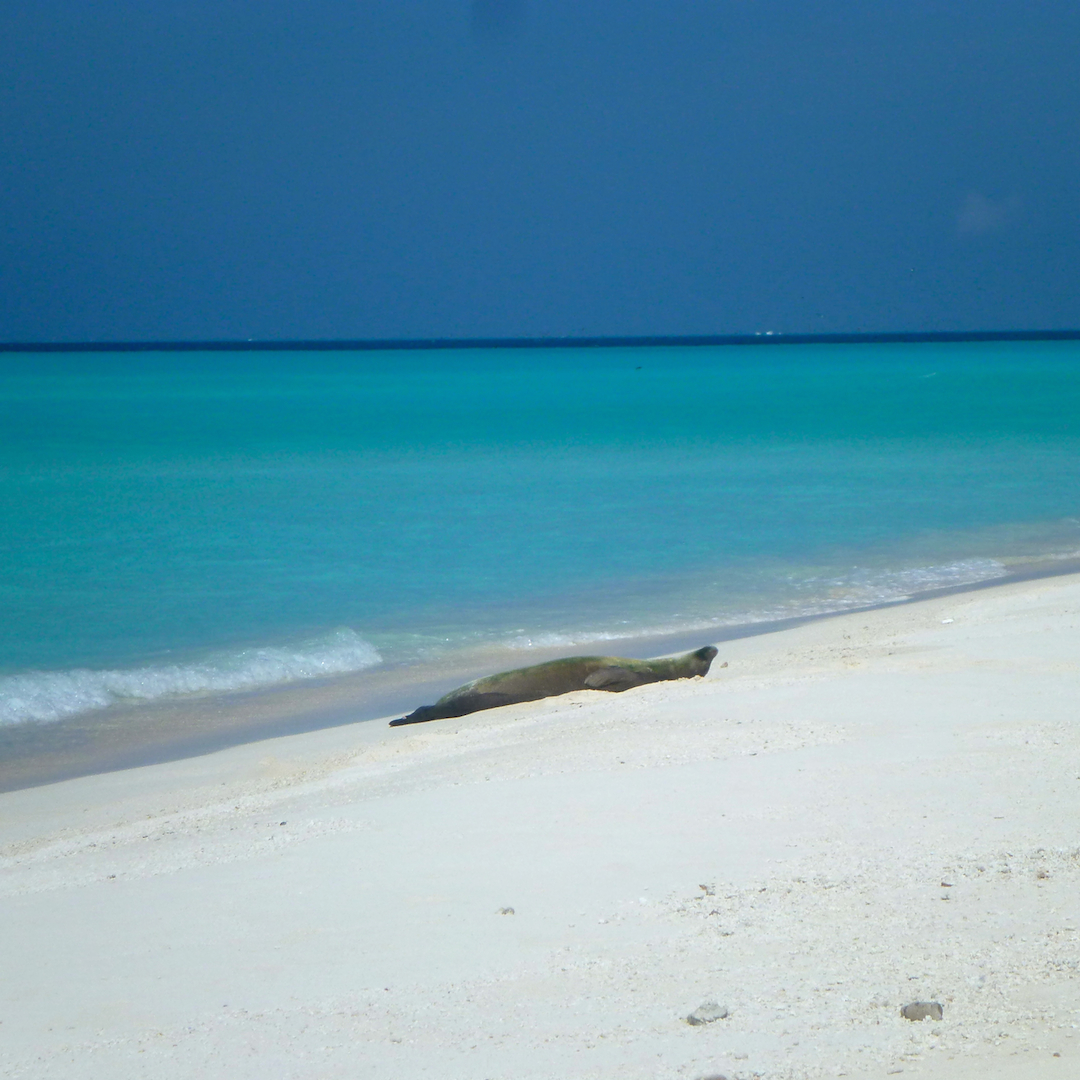
A monk seal show us the proper way of using the beach.
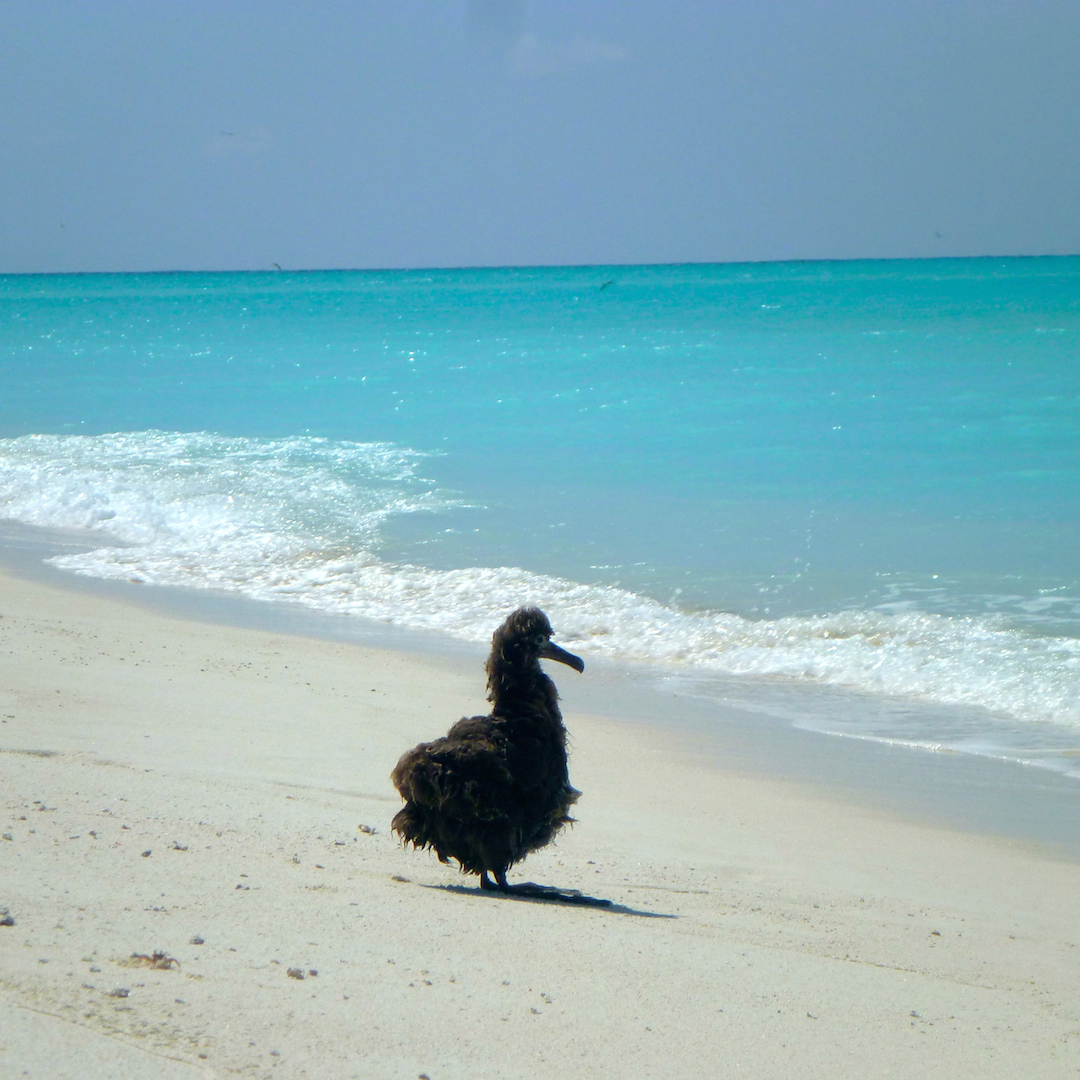
A young wet albatross looks over the horizon for its parents.
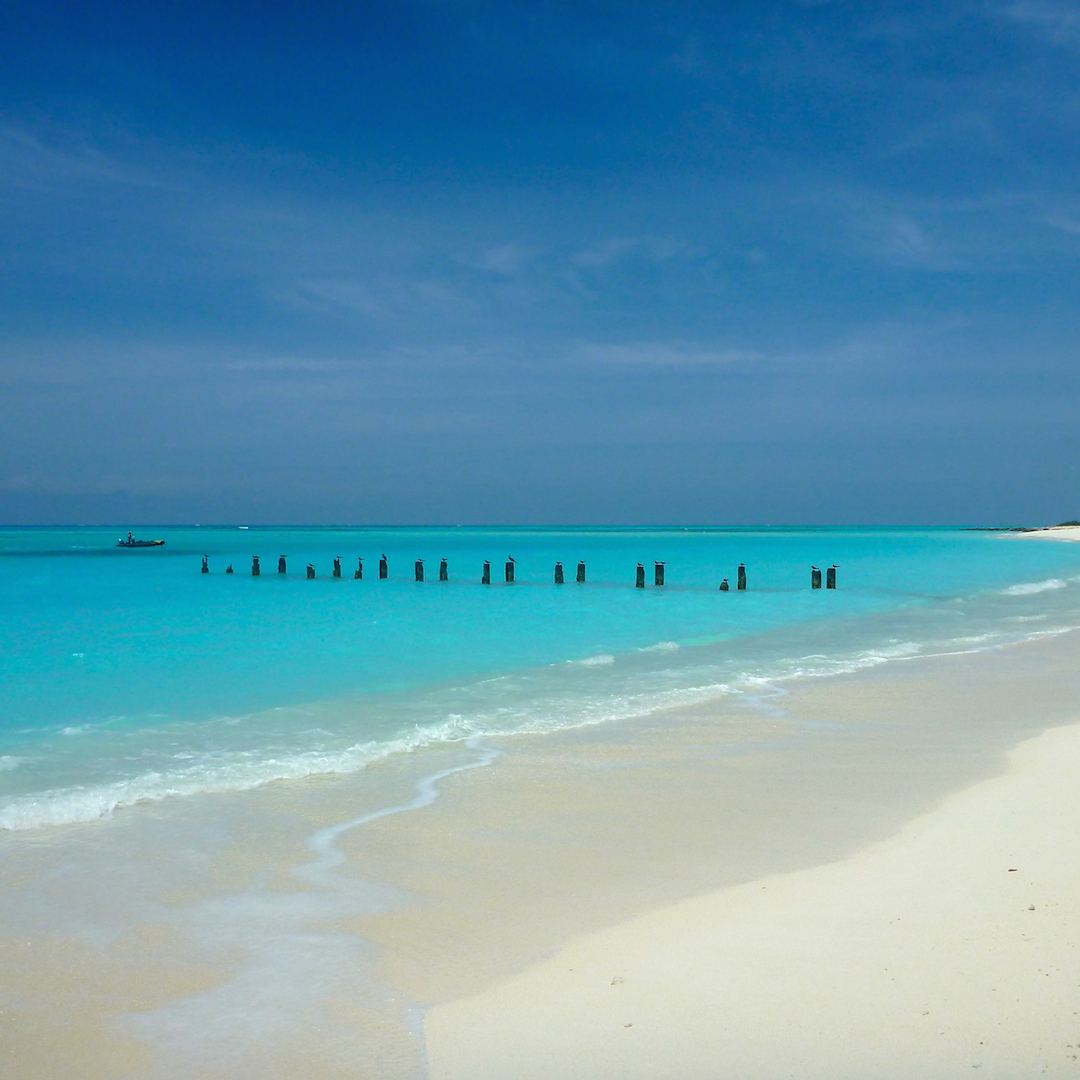
The environment seemed to slowly be erasing our memories of society and the modern world. The essence of this place absorbed me. However, the presence of man made structures (and of course debris on the beach) would cause a loss of immersion and snap me back to reality.
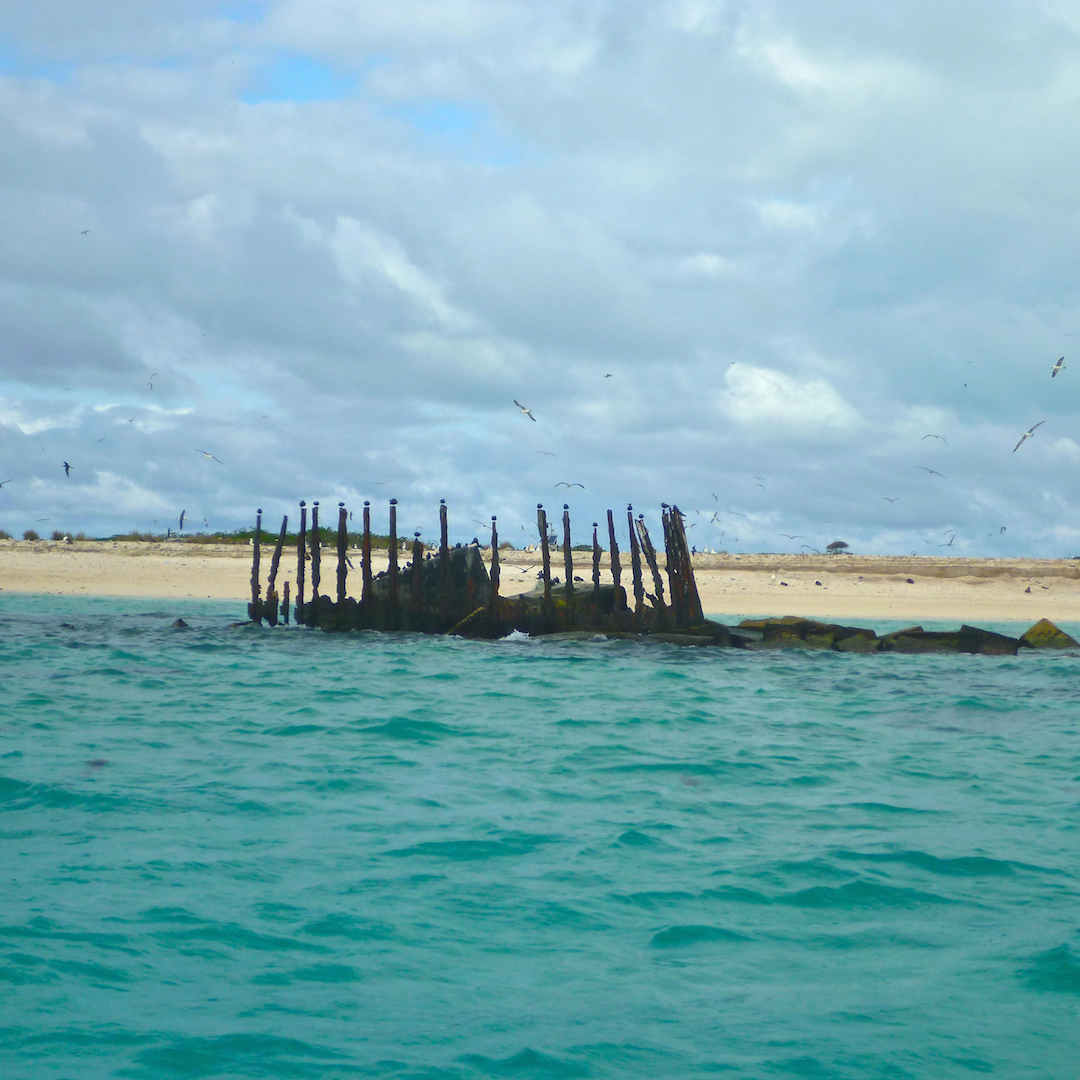
Above the ribs of an abandoned shipwreck serve as perches for birds to rest on. Despite having just become a US colony in 1867, Midway Atoll has had a more interesting history than some states. The island hosted the longest transpacific telegraph cable in 1903, while being taken over by the US navy that same year. From 1935 to 1941, Midway became a luxurious destination for the super rich who could afford the trip to paradise. The Atoll played an essential role in turning the tide of WWII for America. This naval/air base served as the tip of the spear and an essential resupply/resting stop for troops throughout the Korean, Cold and Vietnam War. With the development of new technology, such as satellites, nuclear subs and missiles that could be shot across the ocean, Midway’s importance as a military base began to decline. From 1978 to 1987, the Navy began pulling the last remaining soldiers from Midway and turned the management of the Atoll over to the civilian sector.
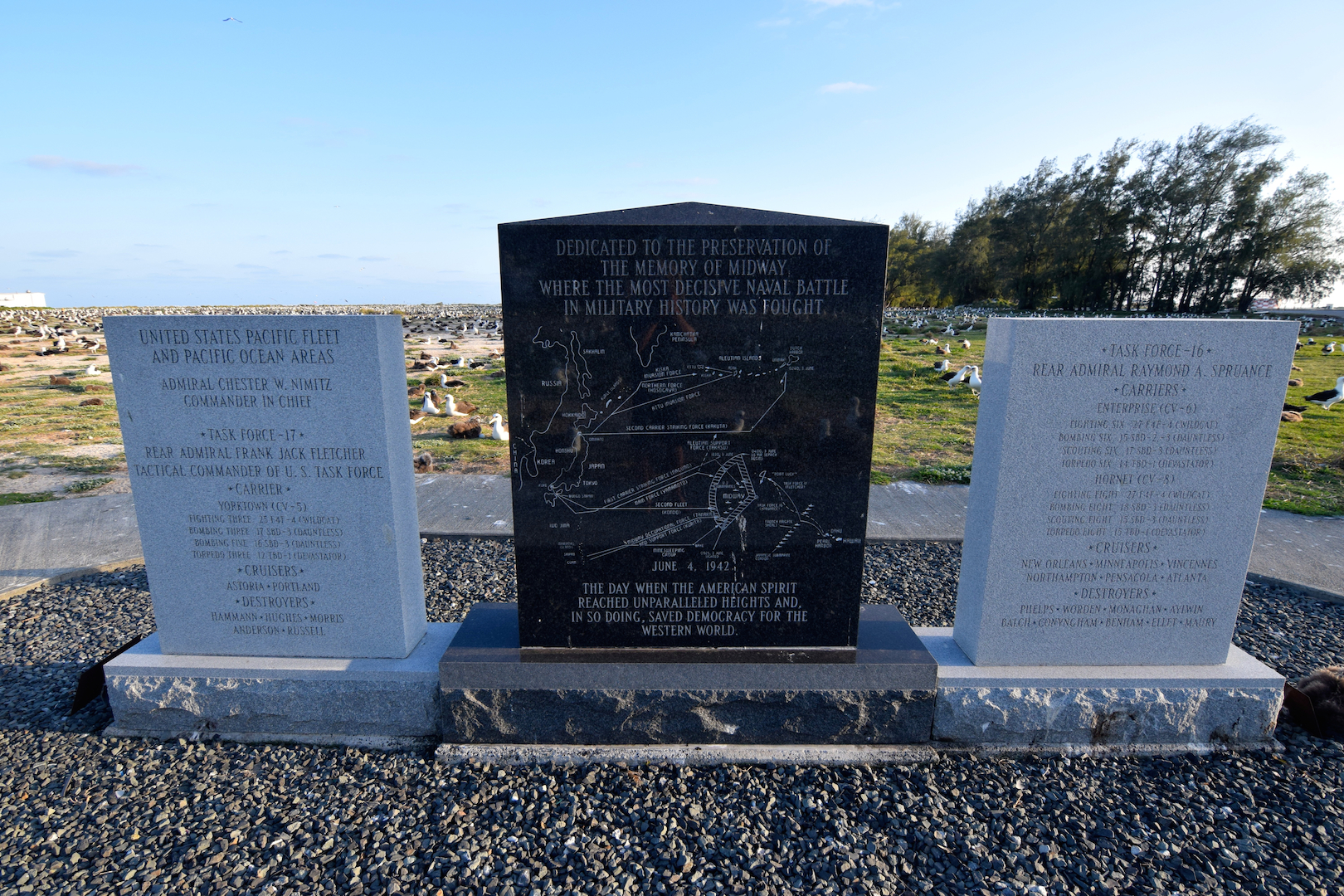
However, reminders of the military’s presence are ubiquitous on Sand Island.

Memorials stand in several locations around the islands to remind us that some paid the ultimate sacrifice to grant us the freedoms we have today.
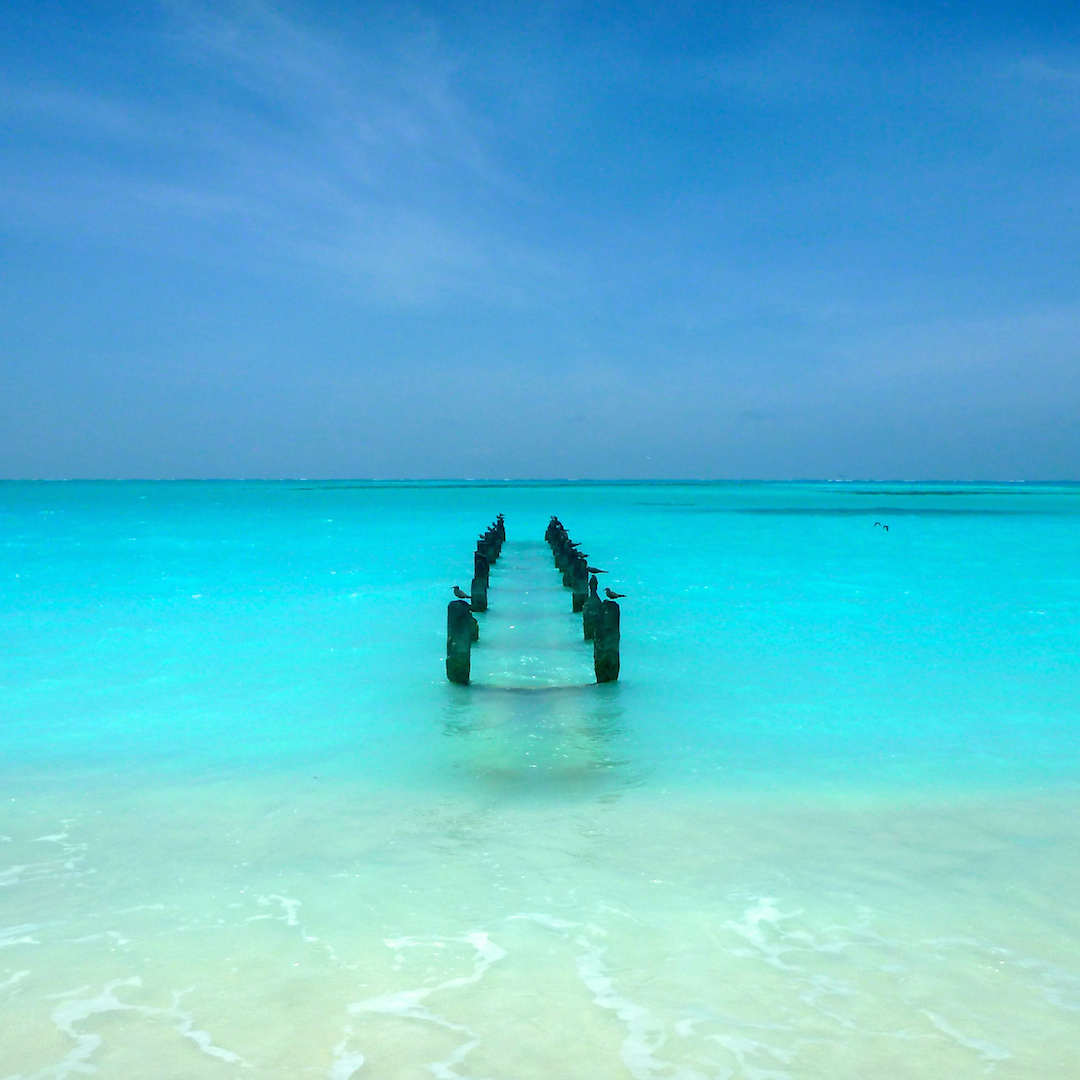
Some of the structures did not seem to degrade the environment at all. What I once saw as a scar, I now see as an elegant piece of art which infuses the landscape with character.

Docks and piers of all sizes remind me of the battle ships, cruiser, destroyers and aircraft carriers that had to stop here.
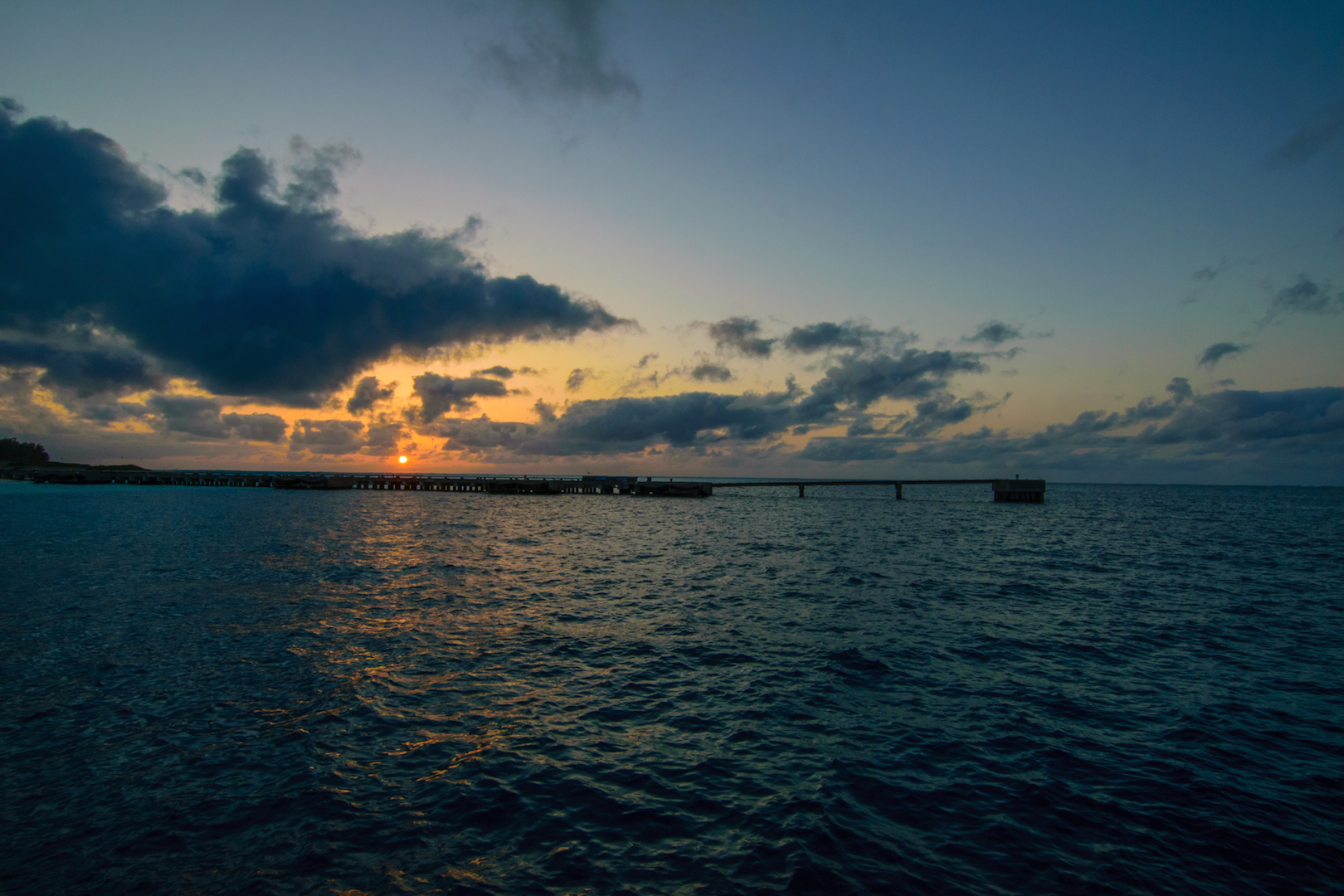
This fueling pier may have refueled the same ships that won the battle of Midway

This 5 inch gun will forever keep a watchful eye on the horizon, guarding the shores that it was brought here to protect.

As it defends this population of albatrosses, this gun embodies the metaphor that Midway is a protected sanctuary.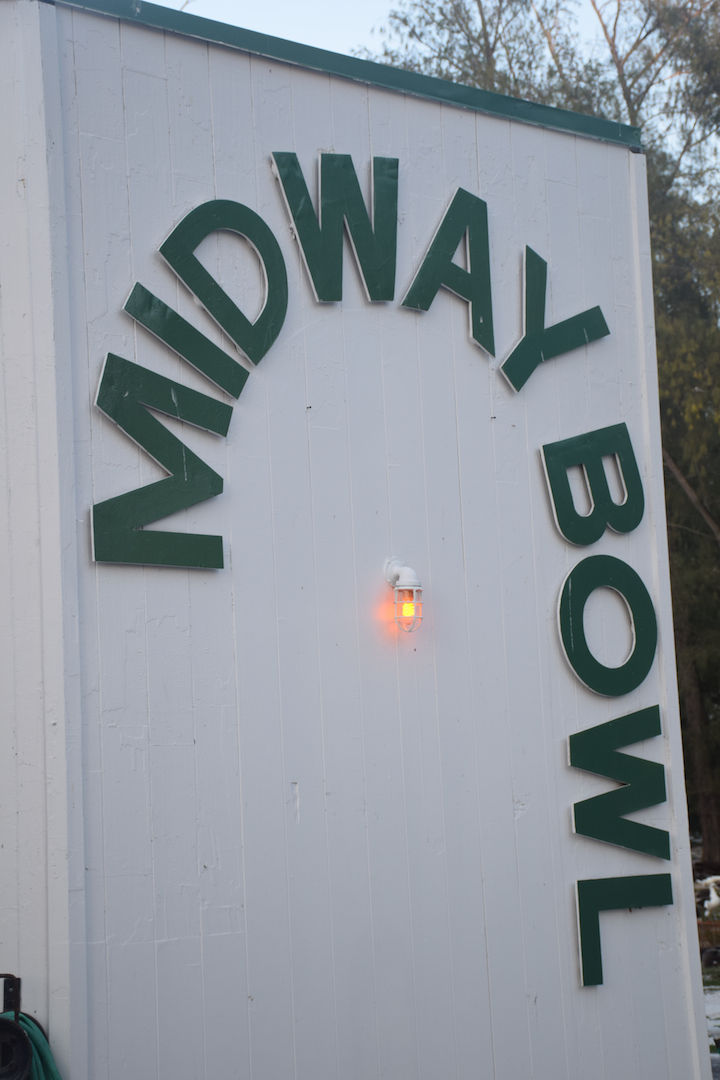
A bowling alley still stands on the main island. This place entertained thousands of soldiers that once called this atoll home.
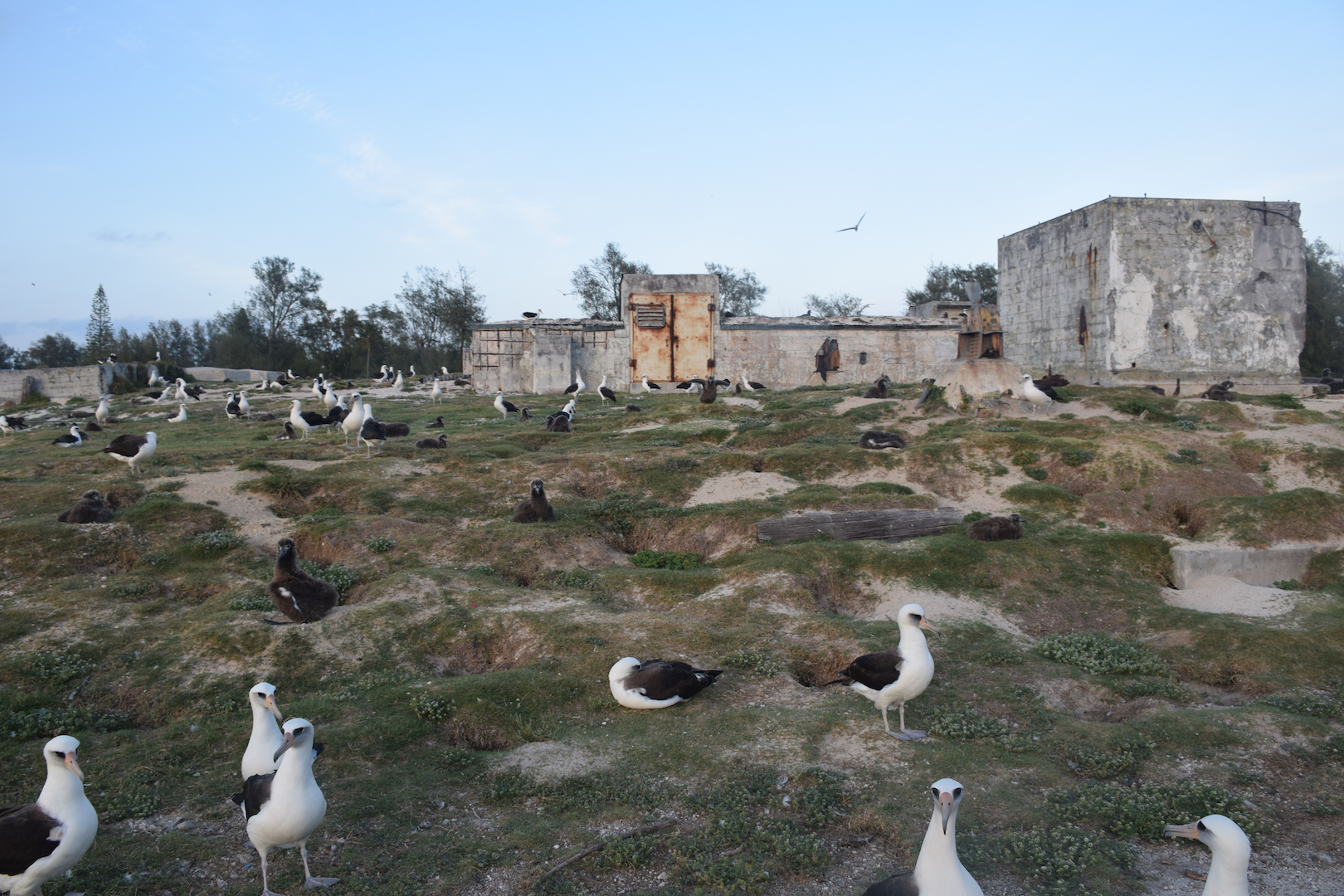
Strange, dilapidated buildings were peppered across sand island.
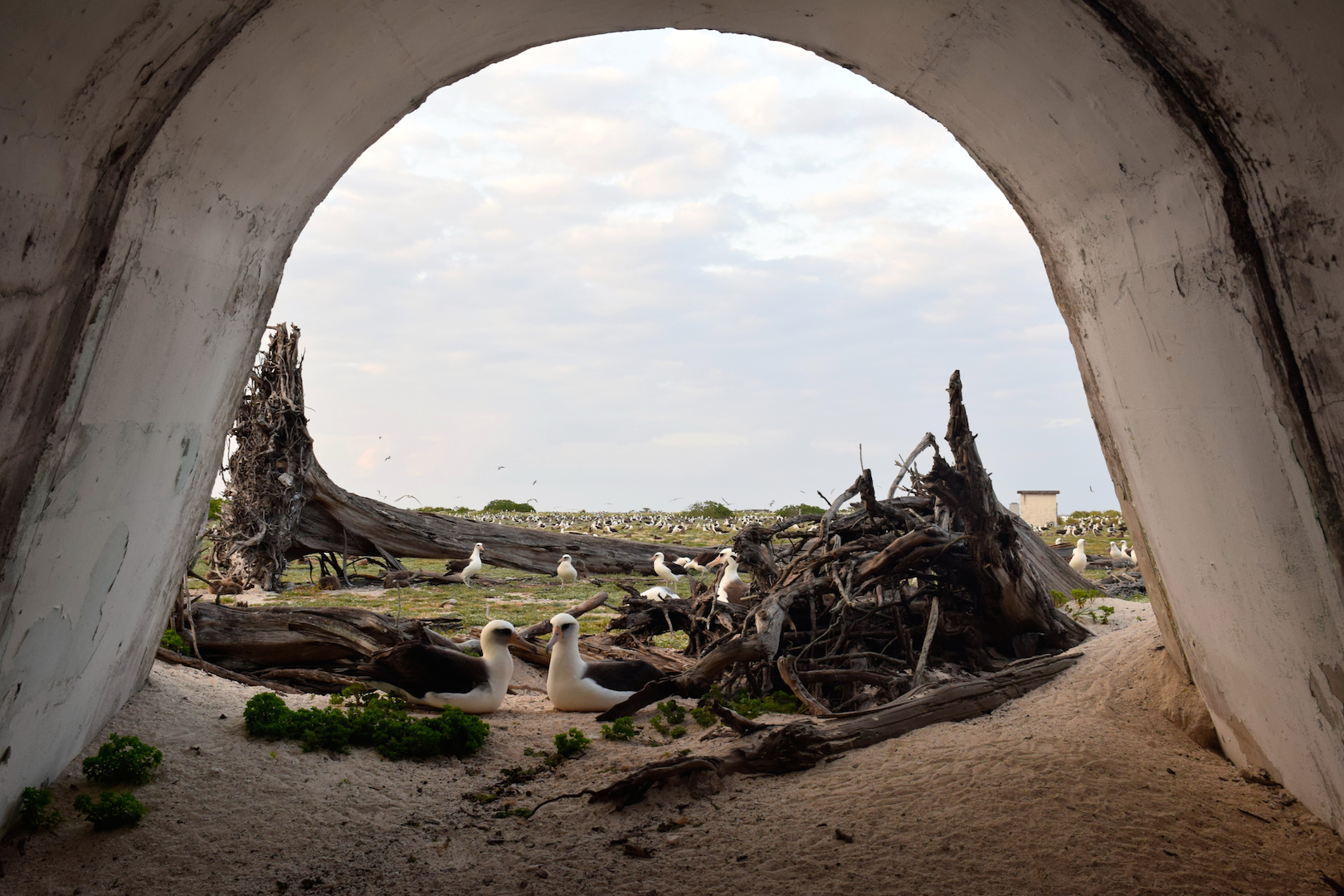
Old bunkers now provide shelter to a shy birds.
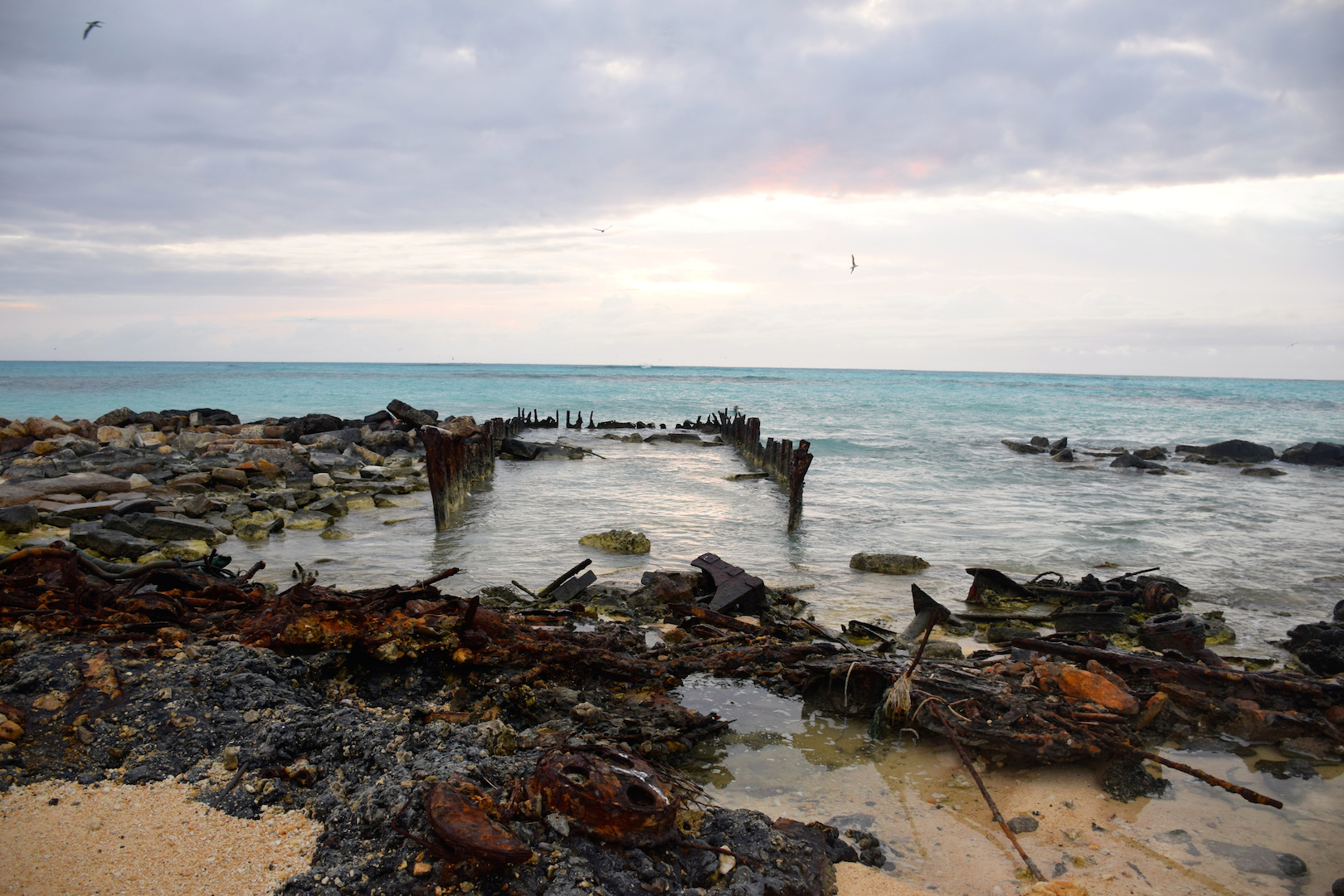
I believe this was another old boat, but it was in such a state that their is no way of telling for sure what kind it was. I would think it was some sort of landing craft.
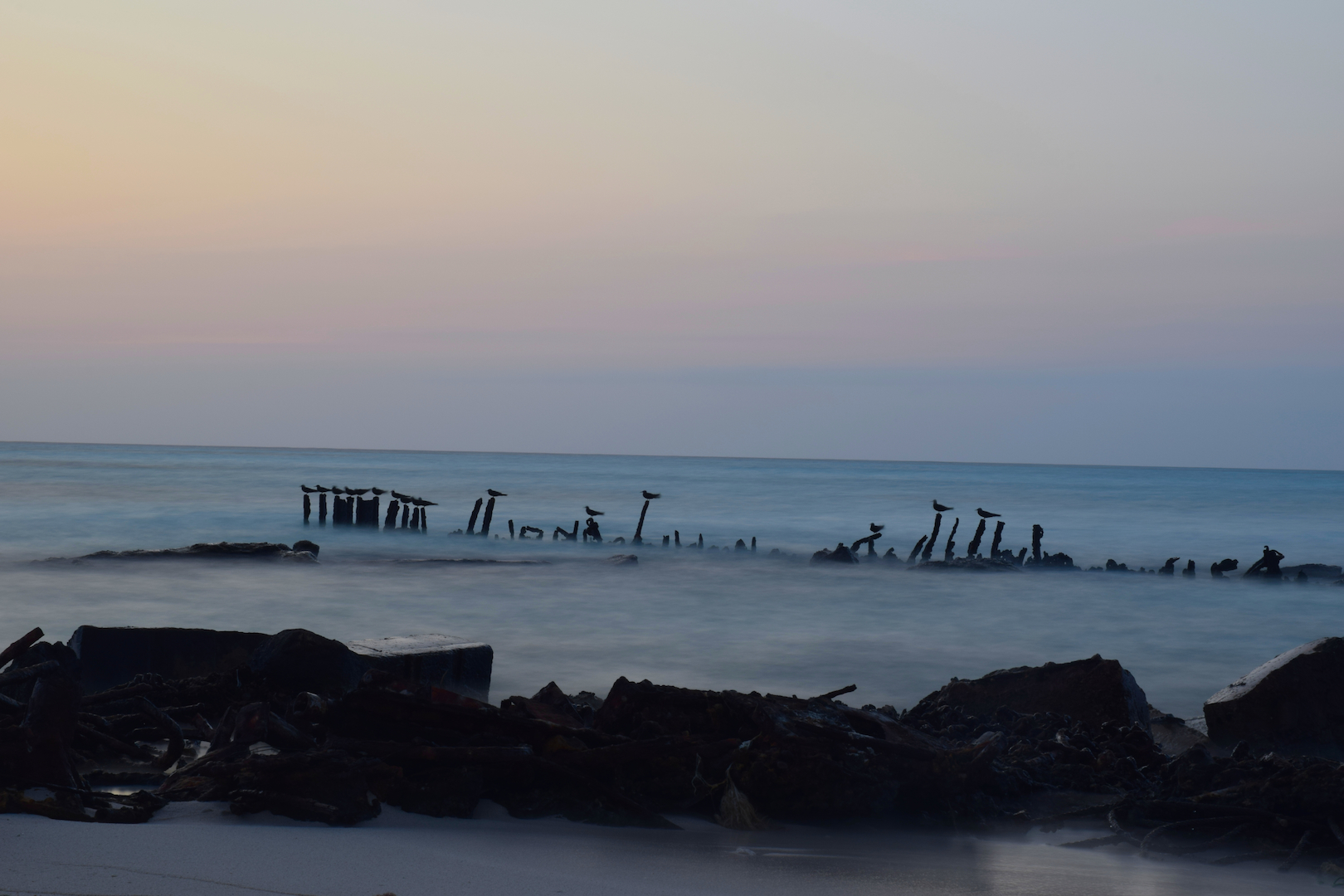
What was once a landing craft for people is now a landing craft for birds.
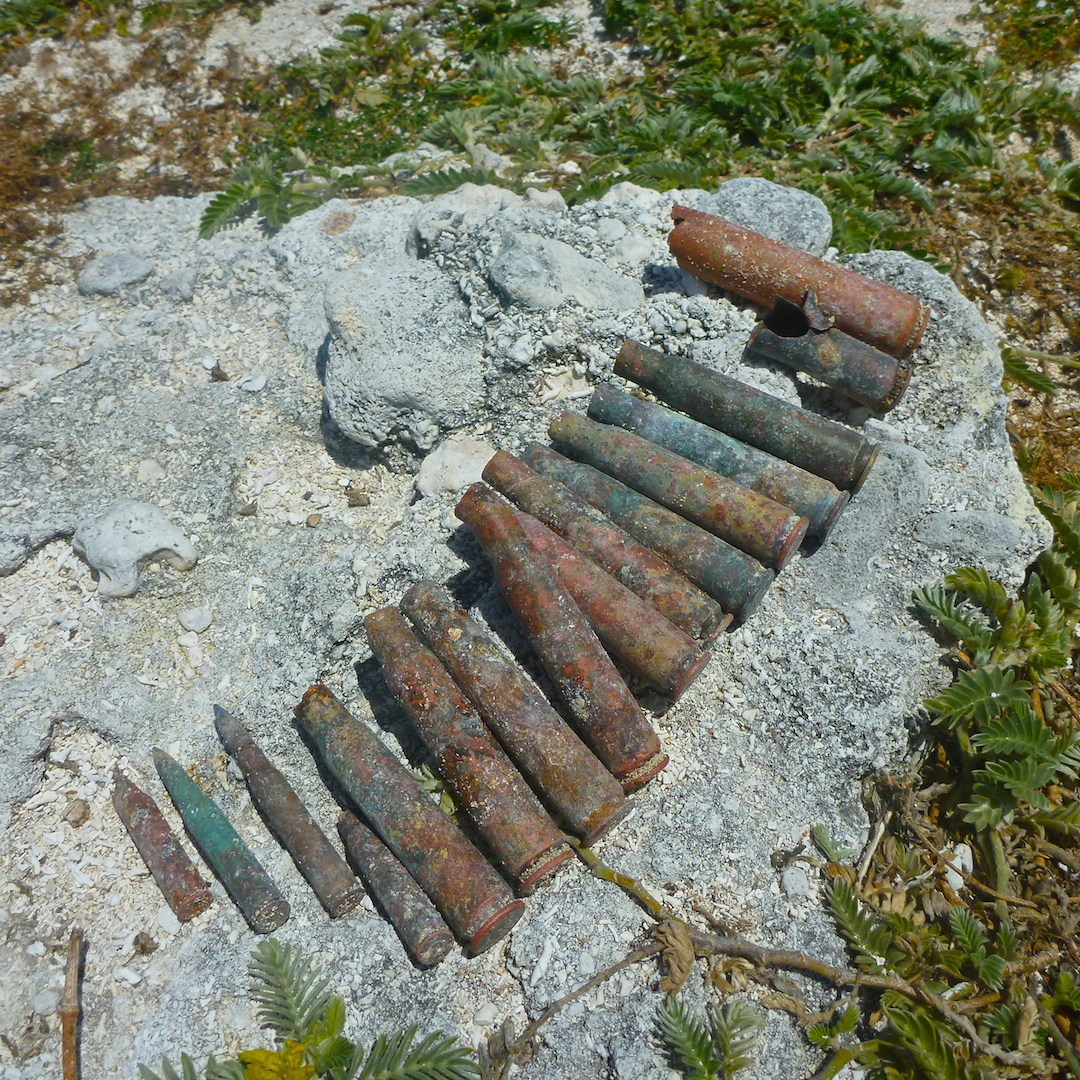
I must say, one of the coolest things that I found while making my way around the islands was the assortment of misfired and spent gun shells. I’m not super familiar with bullets, but the smaller rounds looked like .308 riffle shells. The slightly larger ones are 50 cal.. But the last two (on the far right) were bigger still and I have no clue what they were. These were found on the eastern most side of Eastern Island. Some were in the shore break, others were buried in the sand.
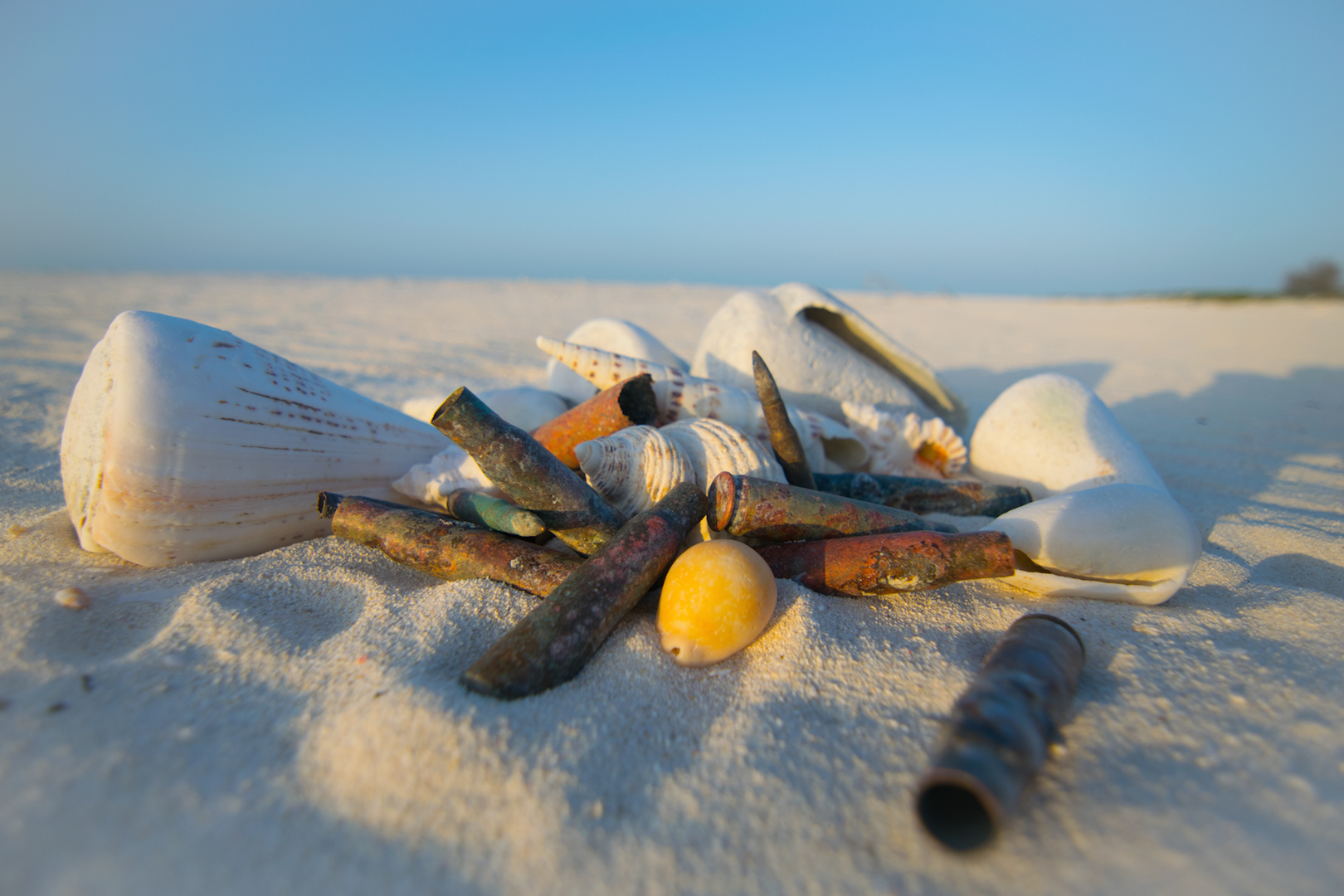
You find all kinds of shells at Midway Atoll! We were not allowed to keep any of the shells or WWII artifacts that we found, but I would collect them to decorate my room.
For those of you who do not realize how important the Battle of Midway was I will try to impart its significance to you. Japan had launched its devastating sneak attack on the USA at Pearl Harbor 5 months prior. This victory was huge for Japanese moral and really boosted their confidence. Japan’s ambition became domination of the entire Pacific (and probably the world…). Luckily for America, it intercepted and deciphered a coded message laying out Japan’s plan to take over Midway, just a month before the attack was to take place. Yorktown, Hornet and Enterprise (3 US Naval aircraft carriers) were sent up to wait and ambush Japanese troops upon their arrival. Japan sent the same 4 aircraft carriers (plus their entourage of 2 battleships, 3 cruisers and 11 destroyers) that bombed Pearl Harbor to attack Midway. The Japanese forces were undefeated up till now and were feeling pretty confident. As the Japanese approached Midway, their leader General Nagumo ordered the first attack wave on Midway, sending out over 100 planes. He kept his most experienced pilots with him in case US ships turned up. He then sent out scout planes to patrol the area, but expected no resistance as the attack was meant to be a surprise. At Midway, all the bombers and fighter planes had been ordered to take off, as the Japanese were expected to bomb the base on that day. The Japanese found few valuable targets left upon their arrival. Midway’s fighters and torpedo bombers went for the Japanese ships but none of them landed a single shot, due to the heavy anti-aircraft fire that greeted them. Meanwhile, the US carriers launched their fighters and torpedo bombers to attempt a hit on the Japanese while they would be resupplying the planes returning from Midway’s bombing. A second strike force from Midway went out to attack the Japanese carriers, but the inexperienced torpedo bombers were all shot down by Japanese zeros before they could even reach the carriers. Midway’s B17 bombers launched their bombs from 20,000 feet and missed every single shot. As Admiral Nagumo was preparing a second attack on Midway, one of his patrol pilots announced the sighting of a US carrier. This news shattered his expectations of an easy victory as he was hoping the US navy would be a thousand miles away. At this point Nagumo found himself at a disadvantage because his first wave of attack and his zero fighters were all circling, waiting to land and refuel. Rather than send a partial attack on the US carrier, he chose to wait and refuel all his planes for one giant attack. A strike wave from US carriers went out to meet the Japanese carriers, but because the Japanese changed course the majority of the US force never found the Japanese fleet. Furthermore, the US carriers’ torpedo planes got separated from their fighters (I believe the fighter planes were there to defend the torpedo planes). As the US torpedo planes launched their assault, they found themselves extremely vulnerable to Japan’s defenses. Most of the US torpedo planes were shot down and not a single torpedo hit a target. For the Enterprise, 18/28 torpedo planes were shot down, the Yorktown lost 21/24 torpedo planes and 29/30 of Hornet’s torpedo squadron were shot down. It appeared as though Japan was on its way to winning another naval battle. However, as Japan was preparing massive launch of zeros and bombers to destroy the America’s navy, US dive bombers happened on to their entire carrier fleet. American Dauntless bombers turned 3 of the 4 Japanese carriers into blazing infernos. The last Japanese carrier managed to launch a strike force of 18 dive bombers and 6 zero fighters, whose goal it was inflict a devastating blow on the US navy by attacking her flagship, the Yorktown. After penetrating a barrage of anti-aircraft fire, only 5 Japanese bombers remained, but this was enough to drill a few bombs through the Yorktown’s flight deck. Fortunately, none of the ship’s magazines or fuel exploded. The Yorktown was still functional and she continued to land and launch fighter planes. The remaining Japanese carrier then sent a second, smaller, raider party (6 fighters and 10 torpedo bombers). Only 4 Japanese bombers survived the US defenses, but they managed to hit the Yorktown with 2 torpedoes, while a third kamikaze pilate intentionally crashed his plane into the ship. The Yorktown began to sink and its crew was forced to abandon ship. US dive bombers eventually found their target on the last of the Japanese carriers and sent her to the bottom of the sea. After considering another attack comprised solely his remaining battleships, Admiral Yamamoto came back to his senses and ordered a withdrawal. As Japan fled, American dive bombers continued to attack their remaining ships and succeeded in sinking a few more. In this battle Japan lost about 3500 men, whilst the US lost 300. The battle of Midway has been widely recognized as a turning point in WWII and allowed the allied forces to regain a foothold in the Pacific.
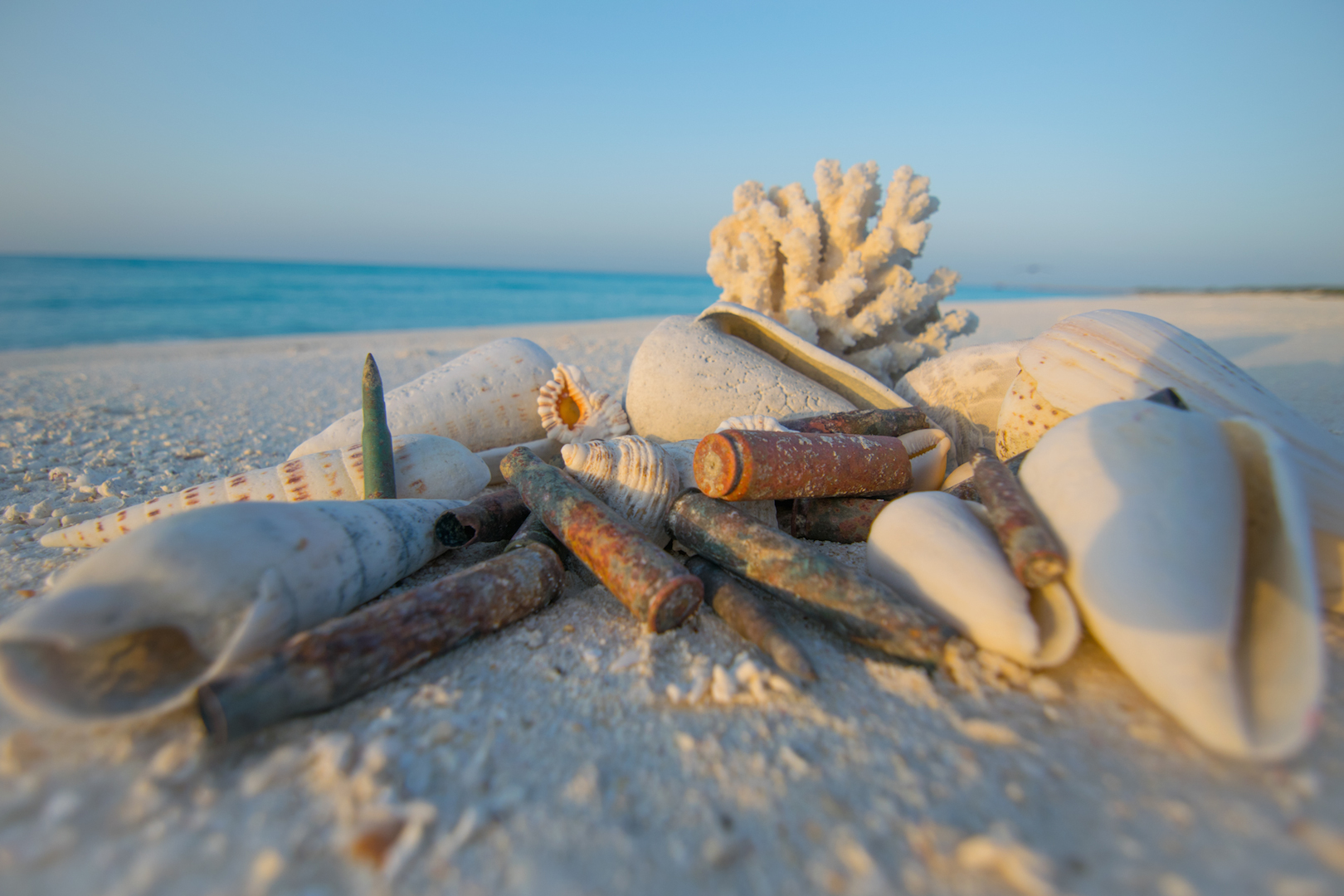
2 thoughts on “The Northwestern Hawaiian Islands (Midway Atoll part 4)”
Comments are closed.